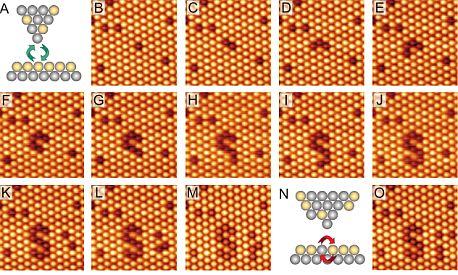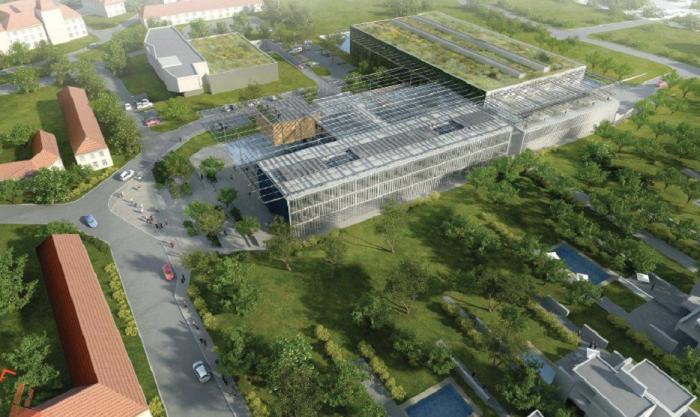The existing research programme of the Institute of Physics includes elementary particle physics, condensed matter physics, solid state physics and plasma physics, and classical and quantum optics.
The research in the area of elementary particle physics is done primarily as part of extensive international collaborations. These collaborations include experiments to investigate the fundamental structure of matter and forces acting in the microworld. These experiments are conducted at particle accelerators in CERN near Geneva, Switzerland, and at Fermilab in the USA and they are closely linked to our activities in the development of particle detectors.
Additionally, we deal with astroparticle physics; a border study between particle physics and astrophysics. In an international collaboration at Pierre Auger Observatory in Argentina, we explore high-energy cosmic radiation. The project represents the largest experiment of this kind in the world. We also focus on research in theoretical and mathematical physics and the use of particle beams in medicine.
In condensed matter physics we study dynamic and cooperative phenomena in disorganised and non-homogeneous materials and systems with a reduced space dimension. The main attention is focused on condensed substances with significant physical properties or those exposed to extreme conditions. We prepare and explore functional materials and composites; superconductors; liquid crystals and alloys with shape memory in the form of monocrystals, polycrystals or nano-structured materials; thin layers and material coatings using the combination of theoretical, experimental and up-to-date technological approaches.
The research in solid state physics focuses on new forms of solid substances, new physical phenomena and the operating principles of microelectronic components. The properties of new materials are defined by surface, defects, and nanometric, multi-layer or aperiodic structure. The research in this field is characterised by the interconnection of advanced technologies for material preparation; unique methods of material characterisation in the wide area of external conditions up to nanometric and atomic level and by the processing of results using microphysical and ab-initio theoretical calculations. The materials are extensively represented by magnetically and optically active materials; nanocrystalline forms of silicon, of III-V semi-conductors, diamond and graphite; and nanostructures for biological, medical and microelectronic applications.
For the preparation of optical materials for optoelectronics, we use new plasma and hybrid technologies. In quantum optics, we develop various types of quantum correlated photon pairs and devices for transferring the information stored in such a manner.
In power photonic, we focus on the interaction of laser radiation and matter and the creation of a new national platform for new laser technologies research and development. Consequently, the PALS terawatt laser system at the Division of High-Power Systems was followed by the creation of the HiLASE center (www.hilase.cz), whose mission is to do research and to facilitate experimental development of a new generation of diode-pumped, pulsed solid state lasers with a high repetition rate, and average power of 1 kilowatt. The new laser systems are significantly stronger, more powerful, more compact and more effective than any devices that are currently available elsewhere. For this reason, the HiLASE has great potential not only in basic research but also in applications and hi-tech industry.
Beamlines, one of the most up-to-date laser research centres in the world, will open to scientists from all over the world in 2018. ELI Beamlines will be a truly multifunctional centre for experiments to be performed not only by physicists but also by chemists, biologists and other scientists, including industrial companies. The combination of laser technologies to be available at ELI will be genuinely unique.
The area of laser physics also involves the project of Extreme Light Infrastructure (ELI), the currently largest investment project of the Institute of Physics of the Czech Academy of Sciences. This project is a part of the European plan to build a new generation of large research centres selected by the European Strategy Forum on Research Infrastructures (ESFRI). As a result, the Institute of Physics is building a laser centre in Dolní Břežany near Prague with the most modern infrastructure for user research. The ELI centre is expected to implement research and application projects concerning the interaction of light and matter on the intensity that is far higher than any currently achievable values. ELI Beamlines laser systems will be able to deliver ultrashort laser pulses, typically lasting several femtoseconds (10-15 fs) and generating the power of up to 10 PW. These systems will enable new findings with application potential in areas such as astrophysics; medical imaging and diagnostics; nanotechnologies; new material development and testing; X-ray optics, etc. Simultaneously, ELI wishes to become an attractive platform for educating a new generation of scientists. Additional information about ELI Beamlines is available at www.eli-beams.eu/cs





